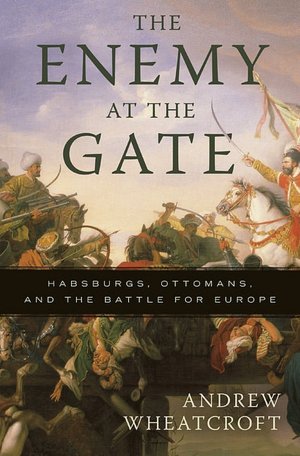Perhaps one of the lessons from studying history is that history is full of myths, that the myths are sometimes created for ugly purposes, and sometimes the mythical history leads to war and savagery.
I posted a couple of times (first, second) about The Enemy at the Gate: Habsburgs, Ottomans, and the Battle for Europe byAndrew Wheatcroft, but I now think I had missed the point of the book entirely. I now think the book was about the way in which myths evolve in history and the ugly results of some myths.
From today's point of view, the long war between the Habsburg Empire and the Ottoman Empire was much like many other wars in the 17th and 18th century. They were primarily initiated as wars of conquest by expansionist empires, although many factors influenced their courses. The Emperor and the Sultan/Caliph needed war to sustain their monarchies, and their aristocracies supported war for their own reasons.
Among the myths was the belief on both sides that the two empires were so fundamentally different that they could never be at peace. That belief is belied by the fact that the two empires became allied against a common Russian enemy in later times and both allied with Germany in World War I. For many decades the borders between the Habsburgs and Ottomans were peaceful.
 |
| Mehmed IV |
| Leopold I |
The Ottomans sought allies in Christian Europe against the Habsburgs and the Habsburgs explored the possibilities of allies among Muslim states to the east of the Ottomans. How then could either have believed that the division between Christian and Muslims was fundamental and unbridgeable.
There were also parallel myths on both sides that monarchs had the right to rule because they were directly descended from individuals who had seized power at some distant time in the past. Both held myths that they were the legitimate inheritors of the Roman emperors. Both had myths that there was a religious basis for their rule: Leopold I anointed by the Catholic Church, and Mehmed IV as Caliph. Both had myths that the legitimate ruler had the right to take the nation as a whole to war.
Wheatcroft points out that while the leaders of the two sides were obviously muddling through, making many mistakes in the process, they were later incorporated into later historical myths as heroes; there must have been real heroes in the fierce fighting that took place, but they would have been common people, lost to historical memory. The myths of a heroic past and heroic ancestors helped shore up imperial power as the empires gradually lost their vitality.
Wheatcroft notes that these ugly and dangerous myths are rising again in some groups in Austria and Germany as Turkish immigrants have arrived and begun to seek work.
Perhaps we should be warned that such myths do not influence our conduct in Iraq, Afghanistan, nor with any of the Muslim nations.

No comments:
Post a Comment